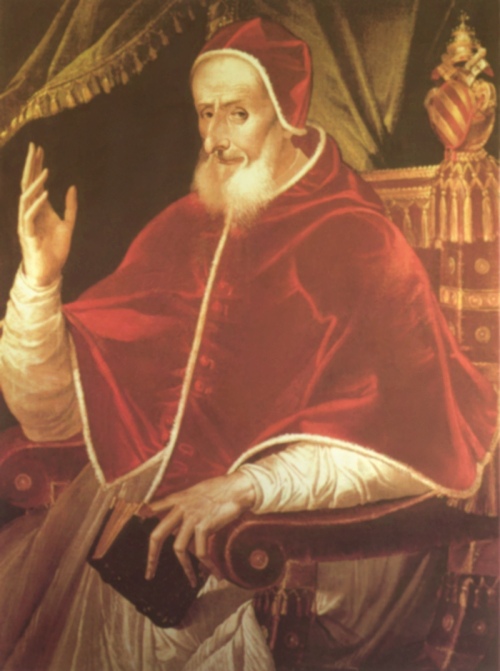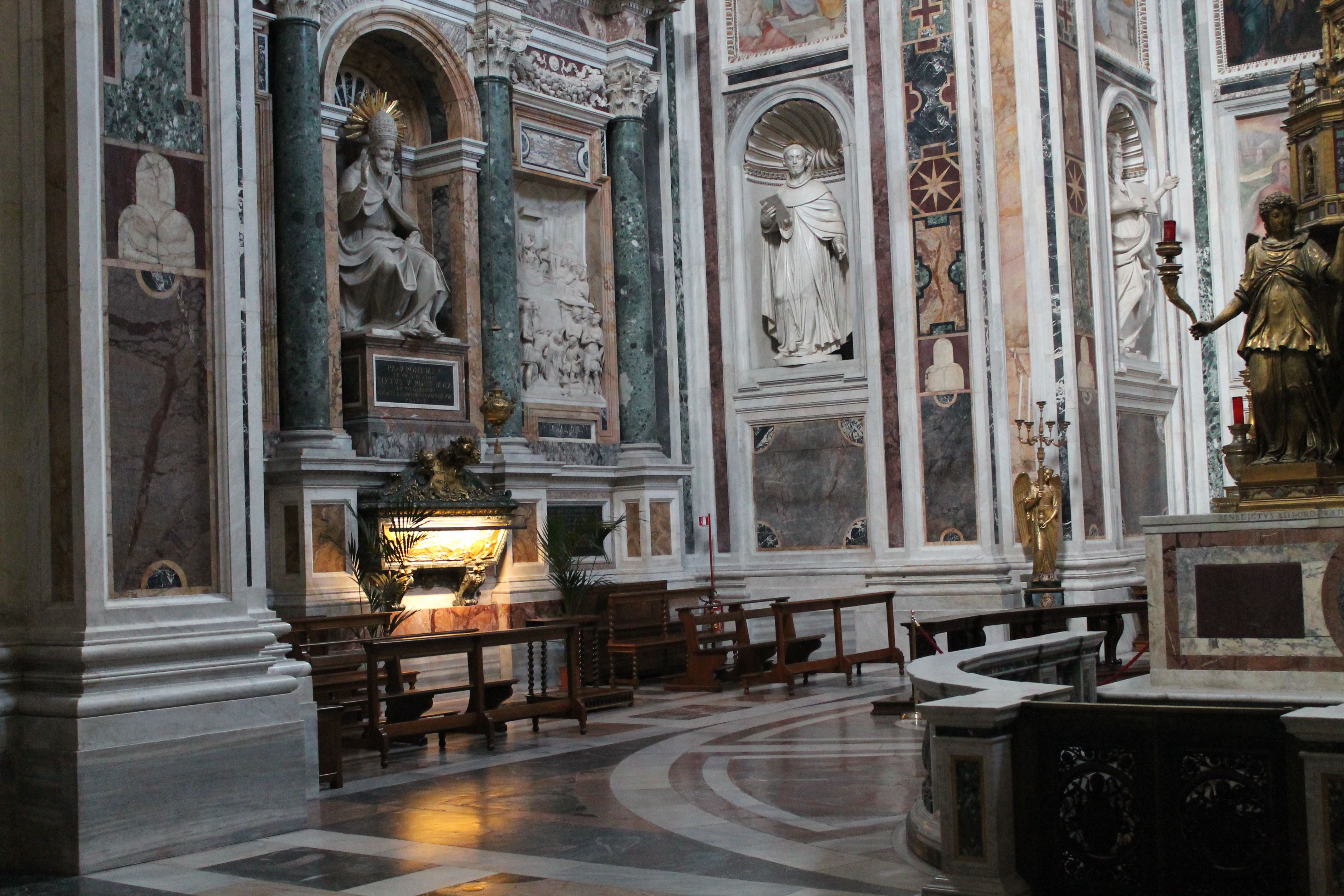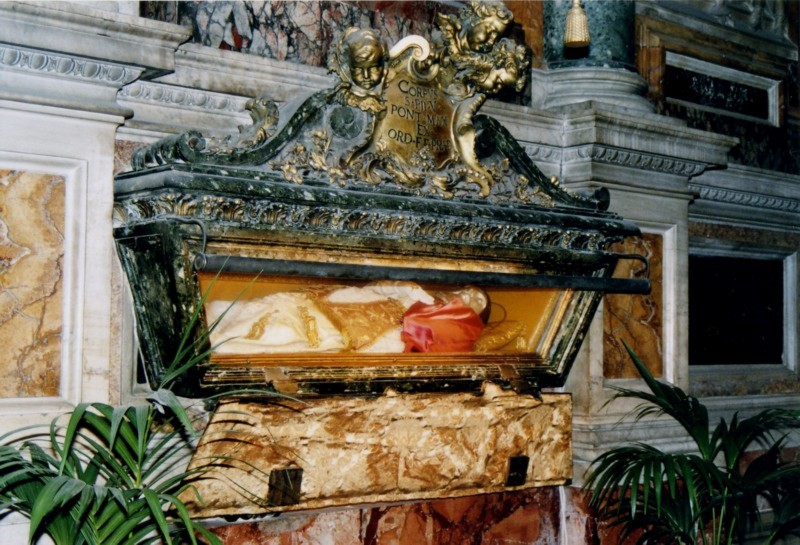Born Antonio Ghisleri, he was elected Pope in 1566 at age 62. His decision to keep wearing his Dominican habit began the custom of the Pope wearing a white cassock.
Pope Pius V was charged with the task of implementing the reforms of the historic Council of Trent. He ordered the founding of seminaries for the proper training of priests. He reformed the liturgical books of the Roman rite, publishing a new missal and a new breviary. He published a new catechism, and established the Confraternity of Christian Doctrine classes for the young. In 1569, he standardized the Joyful, Sorrowful, and Glorious Mysteries of the Rosary.
He was the first Pope after the Reformation to put Catholicism on the political offensive. He excommunicated Queen Elizabeth I of England in 1570 and forbade English Roman Catholics from giving her their allegiance, a serious political mistake on his part since it had the effect of rallying the English to Elizabeth.
He served the sick and the poor by building hospitals, providing food for the hungry, and giving money customarily used for Papal banquets to poor Romans. In his charity, he visited the hospitals and sat by the bedside of the sick, consoling them and preparing them to die. He washed the feet of the poor and embraced lepers. It is related that an English nobleman was converted on seeing him kiss the feet of a beggar covered with ulcers.
Pope Pius V organized a naval fleet, which, with public praying of the Rosary, won a decisive victory against the Islamic Turks in the Gulf of Lepanto off the coast of Greece on October 7, 1571, preventing Europe from being conquered. This date became the feast day of Our Lady of Victory, later changed to Our Lady of the Rosary.
After a tedious illness, Pope Pius V expired in the arms of St. Charles Borromeo. He left the memory of rare virtue and an unfailing and inflexible integrity. He is buried in a glass coffin in the baroque Sistine Chapel of the Basilica of Santa Maria Maggiore (St. Mary Major) in Rome. He was beatified by Pope Clement X on May 1, 1672, and canonized by Pope Clement XI on May 22, 1712. His feast day is celebrated on April 30.
Born Antonio Ghisleri, he was elected Pope in 1566 at age 62. His decision to keep wearing his Dominican habit began the custom of the Pope wearing a white cassock.
Pope Pius V was charged with the task of implementing the reforms of the historic Council of Trent. He ordered the founding of seminaries for the proper training of priests. He reformed the liturgical books of the Roman rite, publishing a new missal and a new breviary. He published a new catechism, and established the Confraternity of Christian Doctrine classes for the young. In 1569, he standardized the Joyful, Sorrowful, and Glorious Mysteries of the Rosary.
He was the first Pope after the Reformation to put Catholicism on the political offensive. He excommunicated Queen Elizabeth I of England in 1570 and forbade English Roman Catholics from giving her their allegiance, a serious political mistake on his part since it had the effect of rallying the English to Elizabeth.
He served the sick and the poor by building hospitals, providing food for the hungry, and giving money customarily used for Papal banquets to poor Romans. In his charity, he visited the hospitals and sat by the bedside of the sick, consoling them and preparing them to die. He washed the feet of the poor and embraced lepers. It is related that an English nobleman was converted on seeing him kiss the feet of a beggar covered with ulcers.
Pope Pius V organized a naval fleet, which, with public praying of the Rosary, won a decisive victory against the Islamic Turks in the Gulf of Lepanto off the coast of Greece on October 7, 1571, preventing Europe from being conquered. This date became the feast day of Our Lady of Victory, later changed to Our Lady of the Rosary.
After a tedious illness, Pope Pius V expired in the arms of St. Charles Borromeo. He left the memory of rare virtue and an unfailing and inflexible integrity. He is buried in a glass coffin in the baroque Sistine Chapel of the Basilica of Santa Maria Maggiore (St. Mary Major) in Rome. He was beatified by Pope Clement X on May 1, 1672, and canonized by Pope Clement XI on May 22, 1712. His feast day is celebrated on April 30.
Bio by: Angela
Advertisement







